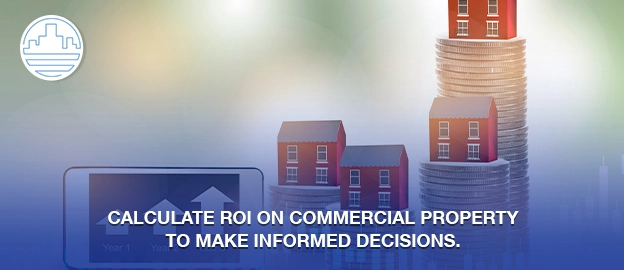
Investing in commercial real estate can be a lucrative venture, but it’s important to understand the potential return on investment before making a purchase. After all, the success of your investment depends on the profitability of the property. That’s where ROI comes in. By calculating ROI on commercial property, you can get a clear picture of the financial benefits and risks of a potential investment. But with so many factors to consider, it can be a daunting task for the inexperienced. That’s why we’ve put together this comprehensive guide to help you understand how to calculate ROI on commercial property, step by step. Whether you’re a seasoned investor or a beginner, you’ll gain the knowledge and confidence to make informed decisions about your commercial real estate investments. So, read on to learn what a good ROI in real estate is and how you can achieve it.
How to Calculate ROI on Rental Property
Step 1: Calculate the Net Operating Income (NOI)
The first step in calculating ROI is to determine the net operating income (NOI) of the property. NOI is the gross income generated by the property minus the operating expenses, such as property taxes, maintenance, insurance, and management fees.
NOI = Gross Income – Operating Expenses
Step 2: Determine the Property Value
The next step is to determine the current value of the property. This can be done through a professional appraisal or by comparing recent sales of similar properties in the area.
Step 3: Calculate the Capitalization Rate (Cap Rate)
The cap rate is a financial metric used to evaluate the potential return on an investment in real estate. It’s calculated by dividing the NOI by the property value.
Cap Rate = NOI / Property Value
Step 4: Determine the ROI
Now that you have the NOI and cap rate, you can calculate the ROI by dividing the NOI by the total investment. The total investment includes the initial cost of the property, as well as any additional expenses incurred, such as renovations or upgrades.
ROI is a financial metric used to measure the profitability of an investment. To calculate ROI on commercial property, you need to divide the property’s net operating income (NOI) by its purchase price.
The formula for calculating ROI on commercial property is:
ROI = (NOI / Purchase Price) x 100%
Here is a breakdown of the terms in the formula:
- Net Operating Income (NOI) is the income generated by the property after deducting all operating expenses, such as property taxes, insurance, maintenance, and utilities.
- Purchase Price is the amount you paid to acquire the property.
For example, if you purchased a commercial property for $1 million and its NOI is $100,000, the ROI would be:
ROI = ($100,000 / $1,000,000) x 100% = 10%
This means that the property generates a 10% return on your investment annually.
What is a Good Return on Commercial Property?
A good ROI in real estate depends on several factors, such as the type of property, location, market conditions, and your investment goals. Generally, a good ROI in real estate is considered to be at least 8% to 10%.
When it comes to commercial real estate, a good ROI is usually higher than that of residential properties. This is because commercial properties have higher rental rates, longer lease terms, and lower vacancy rates, which can generate a higher income.
However, it is important to note that a high ROI does not always mean a good investment. You should also consider other factors such as potential risks, future growth potential, and market conditions. Conducting due diligence and seeking professional advice from a real estate expert can help you make informed investment decisions.
Commercial Real Estate Returns
Apart from ROI, there are other financial metrics that can help you evaluate the performance of a commercial property investment, such as capitalization rate (cap rate) and cash-on-cash return.
- Capitalization Rate (Cap Rate) is the ratio of the property’s net operating income to its market value. It is expressed as a percentage and helps you estimate the property’s potential return on investment. A higher cap rate indicates a higher ROI.
- Cash-on-Cash Return is the ratio of the property’s pre-tax cash flow to the total cash invested. It helps you measure the cash return you can expect from your investment.
In a nutshell, calculating ROI on commercial property is a crucial step in evaluating the profitability of your investment. A good ROI in real estate is usually at least 8% to 10%, but you should also consider other factors such as potential risks and market conditions. Consulting with a real estate expert can help you make informed investment decisions and maximize your returns.
Why Choose BFPM?
If you are looking to invest in commercial real estate, it’s important to work with a property management company that has expertise in the field. BFPM is a professional property management company that specializes in commercial real estate. Our team has extensive knowledge and experience in the commercial property market, and we can provide valuable insights and guidance on understanding ROI. We can help you calculate the net operating income (NOI) and capitalization rate (Cap Rate), which are crucial metrics for evaluating the potential return on investment. By working with BFPM, you can benefit from our expertise in commercial real estate and make informed decisions about your investment portfolio.
Read our related blog here:
Learn more about how we can help. Customized solutions for large portfolios!
